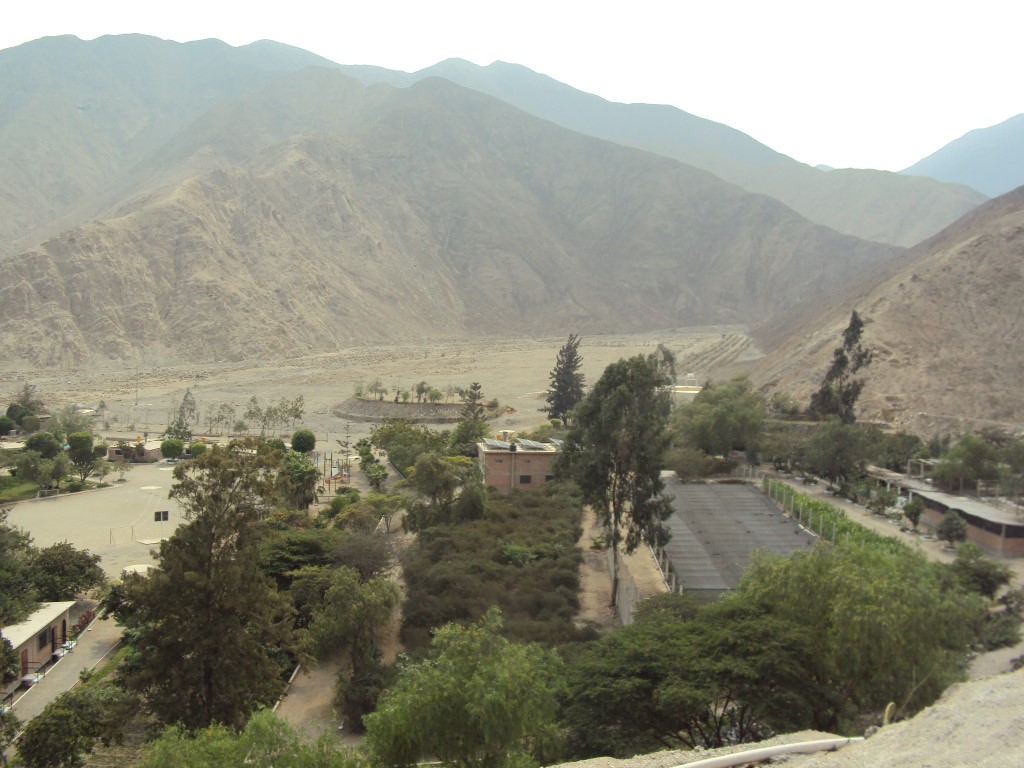Westfalia Orphanage clean water project
Westfalia Orphanage in Cieneguilla Peru has an urgent need to improve the safety and availability of their facility water. There are three major water problems at the facility:
1. The children are exposed to polluted water from a local river contaminated by fecal waste.
2. The existing plumbing infrastructure is outdated and no longer meets the need, neither domestic nor agricultural.
3. The government now requires fire-hydrant capability which does not currently exist.
A detailed engineering plan has just been completed to correct all of these problems. It will make substantive water improvements, eliminate the health risk from polluted water, and can be completed within 8 months of full funding. The cost estimate is S/90,000 or approximately 23,500€ or US$32,500.
Currently, the facility pipework distributes a bacteriologically-polluted mixture of water from the highly-polluted, often turbid local river and a relatively clean off-site well. Both sources of water are mixed and enter a single network of pipework to domestic users, livestock and agriculture. The water from the well is clear, significantly cleaner and has the potential of becoming potable with a sterilization process and some minor facility improvements. The main problem with the existing infrastructure is that without segregation between water sources, the residents are in constant contact with significantly-polluted water far exceeding World Health Organization (WHO) standards and plumbing fixtures often leak or fail prematurely due to sediment fouling. This project will rectify this condition by installing an entirely new domestic pipework network separate from the existing pipework which will be reallocated solely to agricultural use.




An additional problem is that the existing pipework, after many years of expansion and modification, itself is no longer adequate to meet either the domestic or the agricultural needs in terms of water availability. It is a common occurrence for certain buildings to experience water outage while others do not; and the sequencing of agricultural irrigation has to be meticulously managed as water use in one zone can create outage in another. These problems will be eliminated with the new segregation plus some minor improvements to the agricultural-only pipework.
Lastly, new government regulations require enhanced hydrant-based fire-fighting capability which is currently nonexistent. The new infrastructure will be configured to meet these new government requirements and provide a robust ability to fight fires throughout the facility.




OBJECTIVES
Objective 1: Improve domestic-use water quality and availability.
• Install new distribution network so all domestic water comes from the well
• Install new storage tanks dedicated solely to domestic water storage
• Disinfect well and improve facility to potentially produce potable water
Objective 2: Improve agricultural-use water availability and suitability.
• Reconfigure distribution so all agricultural water comes from the polluted river
• Designate specific storage tanks by elevation to irrigation zones to improve suitability for drip irrigation
• Install new pipework and storage to develop a new fruit orchard
• Improve distribution network to eliminate flow problems and pressure losses
• Install sediment filtration
Objective 3: Improve facility security by providing fire-fighting capability.
• Provide fire hydrants and hose with reach to all buildings
Objective 4: Minimize material and labor costs.
• Re-utilize existing tanks, pipes and fixtures
• Minimize digging of virgin trenches by unearthing existing trenches
• Use staff and volunteer workers for labor to the maximum extent possible




1. Funding to purchase a portable water pump and hose to enable us to disinfect the well and investigate its ability to provide safe water. (S/1,600 or US$575).
2. Funding for the overall project (S/90,000 or US$32,500).
3. Volunteer labor to dig ditches, prepare tank locations, and lay pipe.
As you can see it’s a huge project and our biggest one yet. The benefits are extremely important, firstly, the provision of clean water to every building at the orphanage. This means the children will not be tempted to drink water that is far below World Health Organisation standards, nor wash themselves or brush their teeth with water, again, far below World Health Organisation standards. This requires huge new tanks and a lot of pipes! Secondly, it will replace an old, outdated and inefficient pipe system that will not break-down and leave the orphanage without water. It will also cater to the orphanage’s agriculture needs. And thirdly, it will allow the orphanage to meet new government regulations on fire-fighting standards.
But this cannot be achieved without YOUR help. If you can help out please send a donation or help spread the word by copying this post onto your facebook or twitter.
Thanks for making a difference! 🙂
Leave a Reply